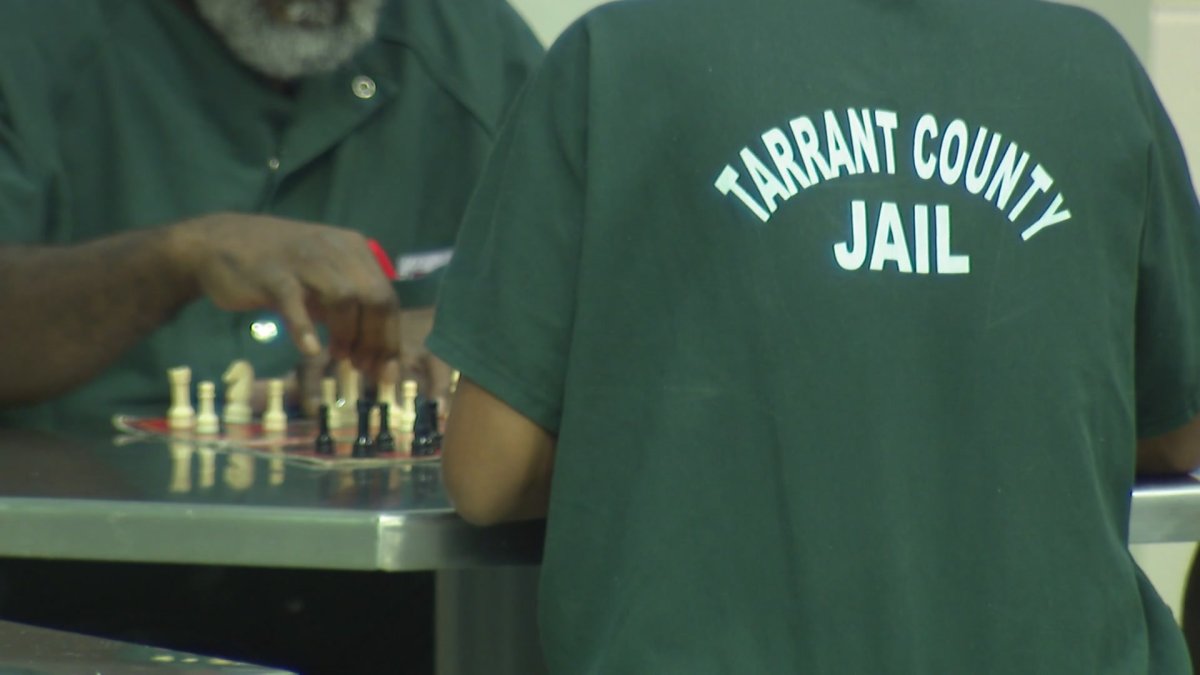At least a dozen agencies now have 287 (g) agreements, as the number of people on ICE detainers also increases.
NBC 5 got an inside look at the role local jails are playing in the Trump Administration’s crackdown on illegal immigration.
NBC 5’s Shannon Miller learned that one of DFW’s largest county jails is now holding hundreds of immigrants every day at the request of ICE.
The Tarrant County jail is operated by one of the longest-running sheriff’s offices in North Texas to enforce federal immigration law.
It’s immigration information that comes quickly from undocumented inmates booked at the Tarrant County jail moments into the intake process, and at the Tarrant County jail, close to 400 inmates are being held on ICE detainers.
“I’ll tell you that 98% of the people that come through the jail, they’ll admit it. They’ll go, yeah, I’m here illegally,” Tarrant County Sheriff Bill Waybourn said.
When NBC 5 was at the jail in July, there were hundreds of inmates, representing 22 countries, behind bars who’d been arrested on criminal charges and had been living in North Texas illegally.
“A lot of serious offenses, including murder,” Waybourn said.
Among the more high-profile inmates are Daikerlyn Alejandraa Gonzalez-Gonzalez and Maikel Coello Perozo, Venezuelan citizens who remain under ICE immigration detainers as they face criminal charges in connection with the death of Ava Moore, who was killed on Grapevine Lake in May.
Waybourn is one of three North Texas Sheriffs whose jails have been working with U.S. Immigration and Customs Enforcement under a 287 (g) agreement.
“I would have rather them never come in the country, but if they’re going in Tarrant County, if they’re going to do the crime, we’re going to find a place for them in the hotel until they’re adjudicated,” Waybourn said.
The Jail Enforcement Model Waybourn’s office has been operating under since 2018, giving local law enforcement agencies certain authority to identify criminal undocumented immigrants and immigration violators in their custody and place them into immigration proceedings at the time of release from their custody.
“Our people send basically a detainer up to ICE, and they have the final approval,” Waybourn said.
Since Senate Bill 8 was signed into law last month, there are now at least a dozen participating North Texas Sheriff’s Offices that have 287 (g) agreements through either the Warrant Service Officer, Jail Enforcement or Task Force Models. The law will eventually require every local sheriff’s office that operates a jail in Texas to cooperate with ICE.
“I don’t think we need to sort of turn North Texas into an ICE police state,” Attorney Paul Hunker said.
Hunker, the former Dallas ICE Chief Counsel, says ICE already has generally good cooperation with state and local law enforcement.
He supports the Warrant Service Officer model of the 287 (g) agreements, but worries that other models, like the Task Force Model, could turn more North Texas law enforcement into deputized immigration officers.
“The sheriffs are going to have a choice, and I encourage them to adopt that model, so that their police force can be peace officers,” Hunker said.
Just six months into Trump’s second term as President, Hunker says there is already a difference in who is given a detainer.
“In the Biden administration, there was a little more discretion about who would receive a detainer, so if a person was simply there on unpaid traffic tickets, that non-citizen in the sheriff’s office, that non-citizen may not have the detainer,” Hunker said.
New numbers from the Deportation Data Project show ICE arrests through the 287 (g) program account for just 4-5% of overall annual ICE arrests in the Dallas Area of Responsibility.
The data also shows that while more ICE arrests are happening in North Texas under the Trump administration since the start of the year, they involve fewer previously convicted criminals and more people with no criminal history compared to ICE arrests under the Biden administration.
Still, Sheriff Waybourn says keeping violent, undocumented inmates behind bars instead of allowing them to bond out before their day in court is worth it.
“I think today, we are safer than we were, quite frankly, a year ago, because that’s not happening under this administration,” Waybourn said.
So do the ICE detainers have any effect on Tarrant County’s jail overall capacity?
When NBC 5 spoke with Waybourn, he said the jail was able to hold a little over 4,600 inmates.
That day, there were 4,423.
Waybourn says he doesn’t anticipate having to house inmates remotely, but the daily cost to house all inmates is increasing.
